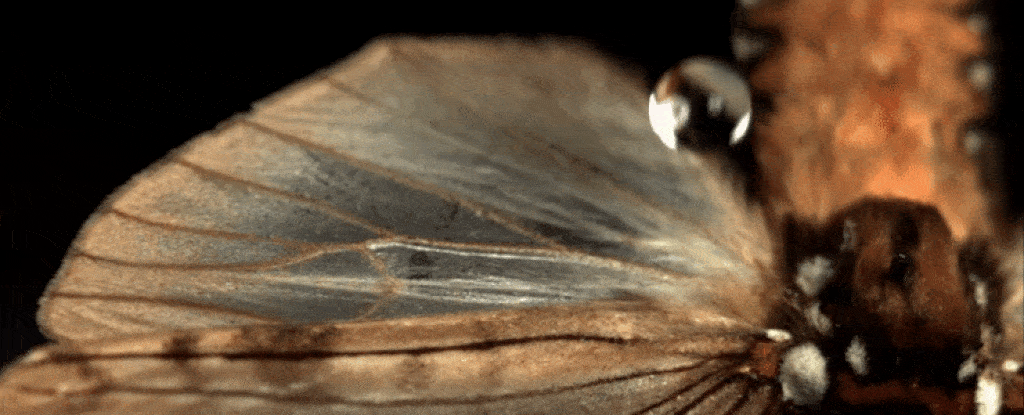Rainy insects are like humans who 'eat' a whole bowling ball in their face, but why don't they die?
If you ever had to ride a motorbike in the heavy rain, you would understand what it feels like to be a "burning face". Extremely uncomfortable, even painful to describe anymore.
But that is us! As for insects, getting hit by a drop of rain like that is like humans we eat an entire bowling ball falling from the sky. Meaning to them, it was raindrops bearing the shadow of death .
"Being hit by rain is a very dangerous factor for small sized animals" - quoted Sunghwan "Sunny" Jung, an environmental biology engineer from Cornell University (New York).
Jung said the danger is not just the pressure to collide with the raindrops. Rains can disrupt insect flight, and wet-feathered birds may lose the ability to keep warm. So, avoiding exposure to rain is very important for most animals.

But why do insects still survive despite a life of countless rains?
Jung and his colleague Seungho Kim and other colleagues went to find out how the plants and animals deal with this danger. They use high-speed cameras to see the impact when rain falls on the wings of some species such as butterflies, moths (moths), dragonflies, sea eagles, and katsura leaves (native plants of Japan). .
Experimental rain hit the wings of insects.
In fact, in the past, there have been several studies observing water collisions with animals, but at a much lower rate than raindrops (up to 10m / s, or 36km / h). ). In this study, the team increased the speed of the water to get the most visual angle.
As a result, they found that the raindrops after colliding with the insect wings would turn into smaller droplets, creating shock waves that spread across the surface. However, the surface of insects' wings has a layer of wax arranged in a nanoscale structure, which helps to reflect these droplets . In addition to water breaking into smaller droplets, contact time with the droplet and wing surface is reduced by up to 70%.
Thanks to this factor, the ability to transmit and heat is greatly reduced, thereby helping the insects still keep the muscles warm to continue flying and avoiding the enemy.

The wings of insect wings have a layer of wax arranged in a nanoscale structure, which helps to reflect water droplets.
"Thanks to two types of structures: one on the microscopic scale (rough, rough structure) and the other on the nano scale (wax structure), they have super-water-proof surfaces" - Jung commented. .
"This is the first study to learn about the collision between rain and the insect's water resistance."
"There is a huge market for applications in this area, such as manufacturing of waterproof materials."
The study was published in the Proceedings of the American Academy of Sciences (PNAS).
- Video: Overcome with the ability to play Bowling backwards
- 10 jobs are extinct
- Video: Unbelievably deformed golf ball
- Bowling appeared since ancient Egypt
- Who invented the round ball?
- Top 10 weird insects
- Nutritional value in insects comparable to beef
- Watching insects 'monster monsters'
- Why are the balls of each World Cup different?
- Spiders picky meals to survive
- Bats catch prey with technology ... missiles
- 16 scenes of affliction that we are suffering in rainy days
 Why do potatoes have eyes?
Why do potatoes have eyes? 'Tragedy' the world's largest carnivorous life: Death becomes ... public toilet
'Tragedy' the world's largest carnivorous life: Death becomes ... public toilet Tomatoes were once considered 'poisonous' for 200 years
Tomatoes were once considered 'poisonous' for 200 years Detecting microscopic parasites on human face
Detecting microscopic parasites on human face What does the weather forecast '30% chance of rain' mean?
What does the weather forecast '30% chance of rain' mean?  From this afternoon, the North will welcome increased cold air, the cold will last longer.
From this afternoon, the North will welcome increased cold air, the cold will last longer.  Why was there heavy rain and terrible thunder and lightning in Ho Chi Minh City last night?
Why was there heavy rain and terrible thunder and lightning in Ho Chi Minh City last night?  Tokyo expands underground 'cathedral' to avoid flooding caused by climate change
Tokyo expands underground 'cathedral' to avoid flooding caused by climate change  Kusari Rain Thread - toi: Making Japan's Own Rain
Kusari Rain Thread - toi: Making Japan's Own Rain  Weather forecast: Thunderstorms in the North from this afternoon
Weather forecast: Thunderstorms in the North from this afternoon 